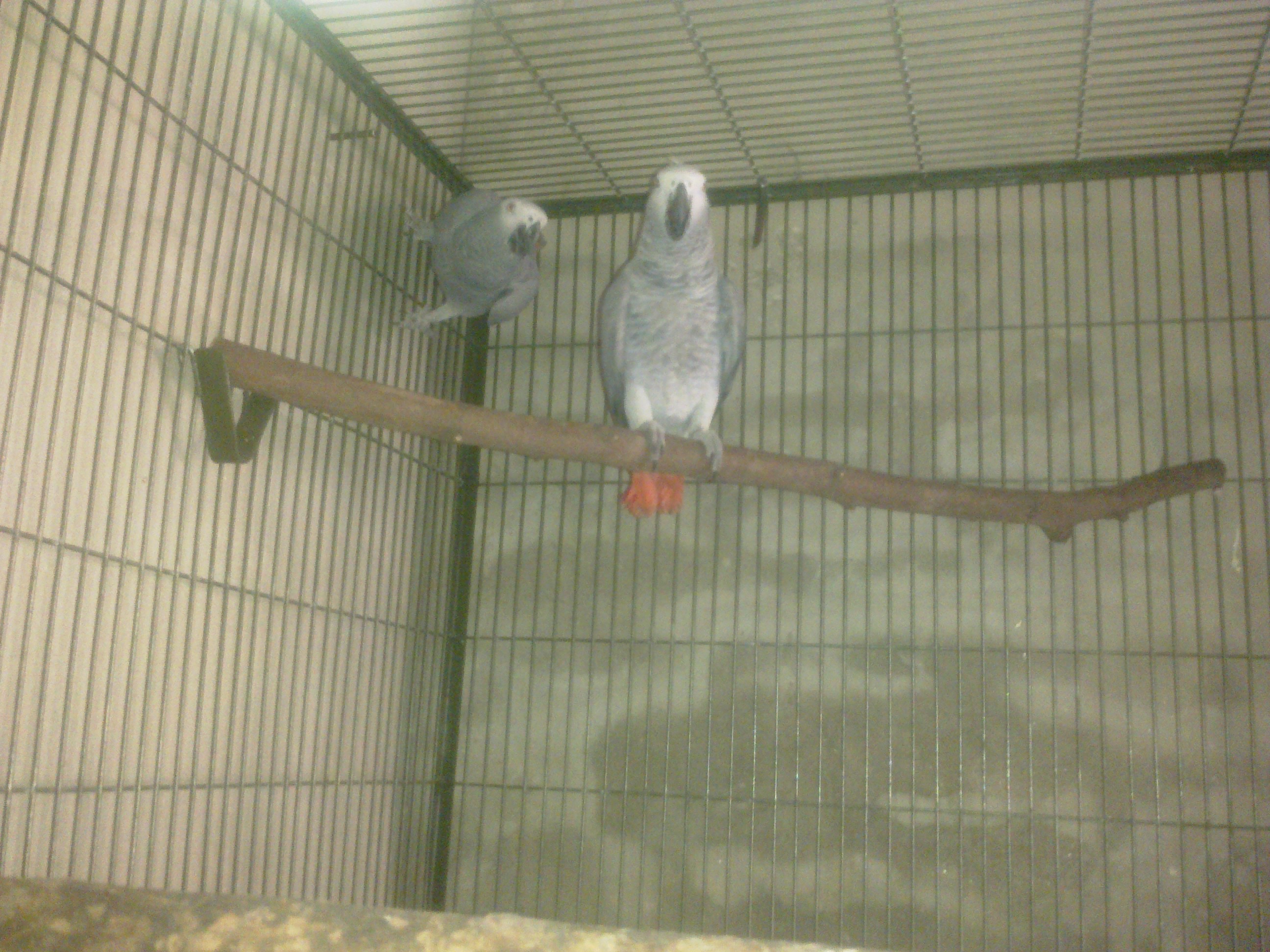The African grey parrot (Psittacus erithacus) is an Old World parrot in the family Psittacidae. There are two known sub-species of the African grey parrot. This article describes the Congo African grey parrot, the other being the Timneh African grey parrot (Psittacus erithacus timneh).
The African grey parrot is a medium-sized, predominantly grey, black-billed parrot which weighs 400 g, with a length of 33 cm and an average wingspan of 46–52 cm.The Congo subspecies is a lighter grey, darker grey over the head and both wings, while the head and body feathers have a slight white edge to them. The tail feathers are red. The Timneh subspecies is a darker gray and has a dark maroon colored tail as well as having a portion of their beak being light pink in color. Due to artificial selection by parrot breeders, there are Congo African grey parrots that that are partially or completely red. Both sexes appear similar. The coloration of juveniles is similar to that of adults, however the eye is typically dark grey to black, in comparison to the greyish-yellow eyes of the adult birds. The undertail coverts are also tinged with grey. The adults weigh between 418 and 526 grams.

African grey parrots are long-lived birds that may live for 40–60 years in captivity, although their mean lifespan in the wild appears to be somewhat shorter at about 23 years.
Distribution and habitat
The African grey parrot is native to equatorial Africa, including Angola, Cameroon, Congo, Côte d'Ivoire, Ghana, Kenya and Uganda. The Congo subspecies is found inside a range from Kenya to the eastern part of the Ivory Coast, and the Timneh subspecies from the Ivory Coast to Guina-Bissau. There are between 120,100 and 259,00 Timneh African gray parrots worldwide. Current estimates for the global population of Congo African grey parrots are uncertain and range from 0.63 to 13 million birds. Populations are decreasing worldwide. The species seems to favor dense forests but can also be found at forest edges and in more open vegetation types (gallery and savanna forests).
A population study published in 2015 found that the species had been ″virtually eliminated″ from Ghana with numbers declining 90 to 99 percent since 1992.They were found in only ten of forty-two forested areas, and in three roosts that once held between 700 and 1200 birds each, now had only eighteen in total. Local people mainly blamed the pet trade, and the felling of timber for the decline.Populations are thought to be stable in Cameroon, and in the Congo an estimated 15,000 are taken every year, for the pet trade, from the eastern part of the country. The annual quota is 5,000.
Behavior and ecology
Breeding African grey parrot
African grey parrots are monogamous breeders which nest in tree cavities. Each couple of parrots needs its own tree in order to nest. The hen lays 3–5 eggs, which she incubates for 30 days while being fed by her mate. The adults will defend their nesting sites. Both parents help take care of the chicks until they can go off on their own. African grey parrot chicks are altricial and require feeding and care from their parents in the nest for a prolonged period. The parents take care of them until four or five weeks after they are fledged. Young leave the nest at the age of 12 weeks. Little is known about the courtship behavior of this species in the wild. They weigh between 12 and 14 grams at hatching and between 372 to 526 grams when they leave their parents.
Diet African grey parrot
They are mostly frugivorous, most of their diet consists of fruit, nuts, and seeds. The species prefers oil palm fruit and will also eat flowers, tree bark, as well as insects and snails. In the wild the African grey is partly a ground feeder.[11] In captivity it can eat sunflower seeds, bird pellets, a variety of fruits such as pears, orange, pomegranate, apple, and banana, and vegetables such as carrots, cooked sweet potato, celery, fresh kale, peas, and green beans.They also need a source of calcium.
Sexing An African Grey
They are Dimorphic and Hence DNA test can assure the gender. there are some visual signs ( which we will discuss later) but no sure decision can be made on that .
